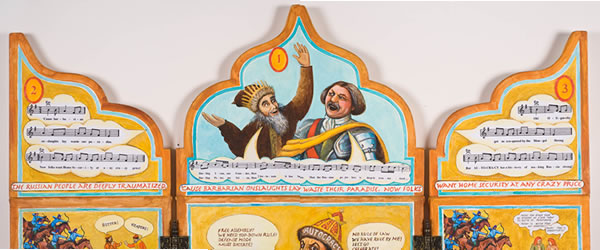Because I seem to be the first
non-UT/DWRL blogger on viz., I’ll introduce myself. I’m Anne Bobroff-Hajal. I'm an artist
interested in something rather hard to find: fine art that incorporates
clearly-graspable rhetoric. Art that attempts to integrate the left
brain with the right.

Detail of Home Security at Any
Crazy Price
So my entries on this blog will
be a treasure hunt, searching for artists who have a double goal: to
communicate something rational or scientific about the real world in a way that
also powerfully moves and/or delights us. There aren’t many such
artists. John Jones accurately observed that visual argument tends, “contrary to Aristotle’s advice,
[to] foreground the use of pathos and ethos rather than logos.” I’m
searching for those very rare artists from whom I – and maybe others – can
learn techniques to balance logos, pathos, and ethos.
Recent comments
2 years 29 weeks ago
2 years 44 weeks ago
2 years 44 weeks ago
2 years 50 weeks ago
3 years 4 weeks ago
3 years 4 weeks ago
3 years 4 weeks ago
3 years 6 weeks ago
3 years 6 weeks ago
3 years 6 weeks ago